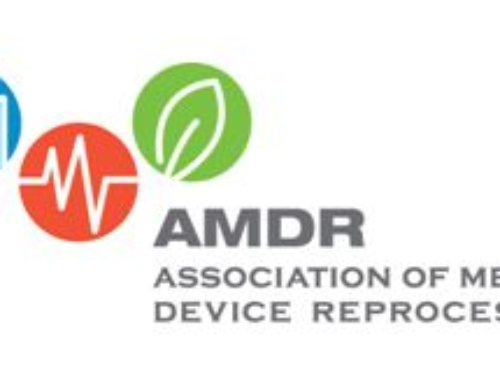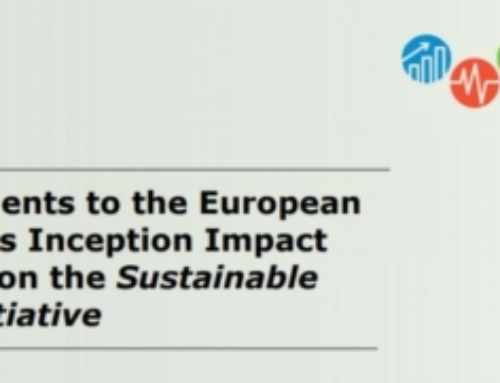Since its outbreak, the COVID-19 pandemic has raised uncomfortable questions for the healthcare industry. What can be done to strengthen supply chain resiliency against unprecedented shocks to the system? How can we cut overhead costs to better address the pandemic?
As the spread of vaccinations brings hope for moving beyond COVID-19, record-breaking heat, melting arctic ice caps, “once-in-a-century” floods and increasingly destructive wildfires remind us that climate change also requires our urgent focus – none-more-so than for our frontline hospital workers and healthcare professionals. Poor air quality means more respiratory-related deaths and diseases, not only in adults, but also in kids and infants. And in such situations, kids may even have to wear a child respirator while going outdoors due to the presence of severe pollutants in the air. Also, unpredictable rain patterns and frequent storms might be responsible for countless deaths. Consider a scenario in which a hospital has been damaged by a storm. Such catastrophic events often require urgent assistance from companies (who provide water removal services), rescue and evacuation teams, and rebuilding firms. This could save the lives of many patients, nurses, and doctors. As a means of preventing this from happening frequently, hospitals may also need to take steps to combat climate change, in addition to fighting deadly viruses and bacteria.
In searching for causes of greenhouse gas emissions, the healthcare sector is not typically considered part of the problem. But it should be. Hospitals and the health sector create more than twice the amount of greenhouse gas emissions than those that come from the entire airline industry.
Here’s what hospital leadership and supply chain managers can do immediately to reduce our carbon footprint.
1. Understand the health sector’s role in creating climate change
Researchers from Yale, Northeastern, and the University of British Colombia – among other institutions – took a deeper dive into the environmental emissions from the U.S. healthcare sector and published the results last December in Health Affairs. The research painted a detailed picture of the environmental and public health impacts of greenhouse gas emissions generated by the U.S. healthcare sector.
Emissions from our health system have worrying implications for public health, as it has been linked to ailments such as cancer and serious respiratory diseases. Top researchers estimate that the total number of lives lost due to pollution from the healthcare industry are comparable to those lost each year to preventable medical errors.
Research shows that the greatest source of emissions and pollution in the healthcare industry – over 80% – is the supply chain where medical devices and supplies are frequently used once and tossed out.
2. Expand reprocessing programs over generating more waste
How can healthcare – in which “do no harm” is such an important ethical foundation – stop from making people sicker and reduce greenhouse gas emissions? By finding solutions that create a circular economy, reducing waste, and reusing or reprocessing devices where safe and regulated.
For generations, the healthcare industry has clung to a “make-use-dispose” mentality, in which medical devices are packaged and labelled for “single-use only,” used once and disposed of. This “linear economy” generates an enormous amount of waste and pollution as well as a dependence on suppliers of original devices, often coming from overseas leading to more supply chain vulnerability.
Because of this, the supply chain presents a set of interlocking challenges: while essential for saving lives, it simultaneously is a source of tremendous environmental and public health damage, financial cost, and operational vulnerability during a sudden rise in demand as caused by the COVID-19 pandemic.
Although this is by no means a simple or easy problem to address, a “low-hanging-fruit” solution to part of the challenge is underused but already available – reprocessing of certain medical devices labelled for “single-use” but cleared by the FDA for reprocessing by commercial reprocessors.
“Reprocessing” refers to the cleaning, testing, disinfecting/sterilization and repackaging of a medical device originally labelled for “single-use” for return to service. Commercial reprocessors are professional, FDA-regulated companies. Despite the original manufacturer’s “single-use” label, over 300 such products can be safely reprocessed, and have been cleared for reprocessing in the United States and the European Union, where the practice is referred to as “remanufacturing.”
Reprocessing is a powerful tool for addressing the interlocking issues of emissions, pollution, cost, and supply-chain vulnerability. Recently, a study published in Sustainability compared the environmental and public health impacts of reprocessed electrophysiology (EP) catheters to original or “virgin” ones. The life cycle assessment looked at the environmental impact across 16 major measures.
The results were remarkable: The researchers found that reprocessing cut the products’ global warming impact l devices can be safely reprocessed, the implications for the role that reprocessing might play in reducing greenhouse gas emissions and cleaning up the healthcare industry are staggering.
Although AMDR member companies reprocessed over 31 million such devices and returned them to over 10,300 hospitals for reuse, our members are convinced this represents only a tiny fraction of the SUDs cleared for reprocessing.
Reprocessing increases the resilience of the healthcare supply chain by keeping stocks of devices in service for longer. However, unlike general waste, items and appliances in a hospital that have outgrown their usefulness cannot be disposed off by dumping them into the garbage bin.
On the contrary, these need to be placed separately and in a secure location until the transport service arrives. The transport service too needs appropriate license, certification, and insurance cover (consider getting answer to the question “can I get a bespoke lorry insurance policy?” here) to be able to transport “high-risk” items to a qualified reprocessing center.
By conserving and reusing resources where possible, and by prioritizing domestic sourcing of devices, localizing supply chains, reprocessing represents a powerful opportunity to practice sustainability principles long advocated by environmentalists.
3. Learn how to take action, now
This past November, the Administration took an unprecedented step forward at the 2021 United Nations Climate Change Conference (COP26), joining over 40 countries in pledging to cut greenhouse gas emissions across health systems – representing the largest global effort yet to slash the health sector’s exploding carbon footprint. For that to be remotely possible, the healthcare industry must now do its part to also step up to the plate in terms of waste reduction. Beyond our duty as citizens and stewards of the Earth, however, healthcare providers have a special responsibility: To make good on that primary principle of non-maleficence that underlies the ancient Hippocratic Oath.
The government will reduce emissions at federal health facilities, which could include DoD and DVA, and would provide incentives, guidance, and assistance to privately operated health facilities to make similar reductions, according to Admiral Rachel Levine, Assistant Secretary of the Department of Health and Human Services, as reported in The New York Times, “More Than 40 Nations Pledge to Cut Emissions From Their Health Industries.”
The United Nations is rallying industry, cities, and regions – along with financial and educational institutions – through its Race to Zero global campaign, to take rigorous and immediate action to halve global emissions by 2030 and deliver a healthier, fairer zero-carbon world in time.
The program encourages commitments to double-down on the Paris Accord and reduce emissions rapidly. U.S. hospitals would be smart to sign on to the initiative. Medical device reprocessing may not be sufficient on its own for the gravity of the task before us. However, the evidence of its efficacy as part of the solution is clear. If healthcare providers and facilities are serious about our ethical responsibilities to patients, to the public, and to the planet, it is a necessary and achievable starting point.
American hospitals and health systems have a moral obligation to lead this charge.
Reprocessing is a step in the right direction.
4. Commit to do better
Work with your colleagues to get your organization to commit to reduce waste through FDA-cleared practices like reprocessing. If your facility already reprocesses, talk to your reprocessor about ways to expand the program to include other devices.
Work with others in leadership so your organization can commit to the UN’s Race to Zero program.
Although most hospitals reprocess at least some “single-use” devices, most don’t reprocess all they could. Some, like the U.S. Veterans Affairs hospitals, throw out every device after one use. Commit to helping your employer reduce its carbon footprint through FDA regulated reprocessing.
Just as important as making these changes is telling others in the health sector that you are making the commitments. Use social media to share how your organization is advancing green innovations and show how this is making a difference. Amplify your impact by linking arms with others who are doing their part to reverse the health sector’s wasteful course to become leaders in cutting greenhouse gas emissions while building a circular healthcare economy that serves as a model for other industries to follow.






